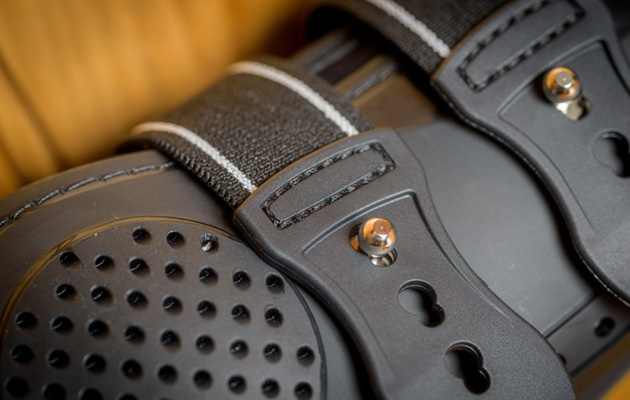For some, turnout boots are an essential part of keeping their horse protected while in the field. Others, however, believe bare is best when it comes to legs. H&H weighs up the pros and cons
If you have a horse who treats his paddock like a playpen, a pair of the best turnout boots are likely to be high on your list of must-have kit. There are a wide range of turnout boots on the market, offering protection from cuts, abrasion, mud fever – and even the effects of the sun.
Shropshire-based Anna Wainwright has dressage horses and says while she is a firm believer in time at grass for all of hers, nothing goes out without brushing boots all round.
“Some of mine just get their heads down and get on with eating when they go out, but I’ve got one in particular who does the wall of death round the field! I just feel happier that they are protected against striking into themselves when they have boots on,” says Anna.
For others, the main concern is warding off mud fever in winter and the effects of the sun in summer. Jill Thorp breeds and shows Welsh ponies from her West Yorkshire base and uses breathable chaps for both situations.
“In wet winters, our land gets very muddy and lots of our ponies have white socks, with pink skin beneath which is vulnerable to mud fever. We also had a mare who developed photo dermatitis one year and the chaps were very useful in shielding her white socks from the sun,” says Jill.

Equilibrium Close Contact Chaps | amazon.co.uk
These machine-washable chaps fit like a second skin with four-way stretch, moulding to your horse’s legs all the way down to the coronet band. There are nine different sizes, including some slim and wide fits.

Woof Wear Turnout Boots | amazon.co.uk
These waterproof and breathable boots create a barrier to mud from below the knee/hock to the base of the heel. They feature a close-fitting hoof capsule with Kevlar reinforced heel protection and have a shaped PU strike pad that offers protection against brushing. Machine washable.
The pros and cons
Clean, protected legs are the major benefit of turnout boots; there’s no doubt avoiding having to deal with legs caked in mud at bringing in time is a big plus for many people. Fitted correctly, chaps designed to sit well down over the heel and up the leg can also stop mud fever or sunburn/photo dermatitis taking hold.
But there are concerns about the effect of heating the lower leg for long periods by encasing it in boots. East Yorkshire showing rider and trainer Dean Shaw says he only uses boots for turnout where needed.
“I don’t like the idea of horses wearing boots in the field for hours. There’s always the risk that they will slip and rub the leg, or get something trapped between the boot and skin which can cause damage.
“It comes down to weighing up the added protection if you have a horse which tends to be unsettled in the field, or perhaps has been on box rest, against the risk of overheating,” says Dean.
This was a subject covered in a 2009 seminar organised by Equilibrium Products, which manufactures turnout boots, looking at the risks and benefits of boots for competition and turnout. Speakers, including the Animal Health Trust’s Dr Rachel Murray, an expert in orthopaedic veterinary medicine, and scientist and equine exercise physiology Dr David Marlin, warned that some boots could restrict movement and blood supply, as well as overheating the tendons and the surrounding structures.
Despite this, turnout boots remain a popular choice for many horse owners.
“I’m aware of the risk of overheating, but modern boot design and technology means most offer a good balance of protection and breathability. It’s just not worth the risk to go without,” adds Anna Wainwright.
Top tips for making best use of turnout boots
• Most manufacturers recommend boots/chaps should not be kept on for longer than 12 hours at a stretch.
• Ensure the boots or chaps fit correctly; sizing guides are available relating to both the length and circumference of the cannon bone.
• Make sure boots and chaps are washed and dried between uses in muddy, wet conditions to prevent chafing.
• Check the straps and attachments regularly (some horses will chew them) to ensure the boots stay in place.
- To stay up to date with all the breaking news throughout major shows such as London International and more, subscribe to the Horse & Hound website
You may also be interested in:

5 of the best turnout boots to tackle the mud

Brushing boots for all budgets

11 pairs of overreach boots that will help to protect your horse

Struggling with mud fever? Here’s what you need to know to tackle it…

Subscribe to Horse & Hound magazine today – and enjoy unlimited website access all year round





